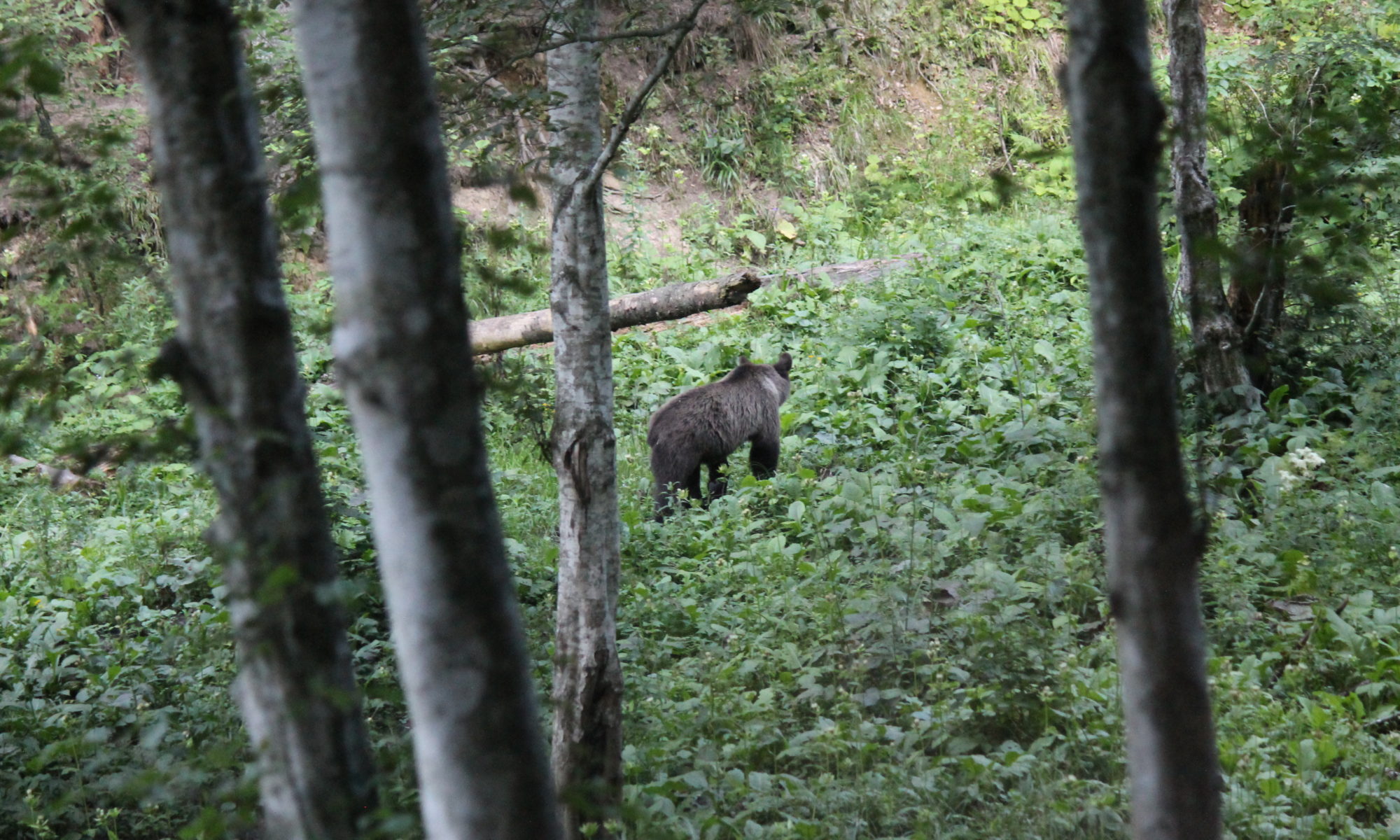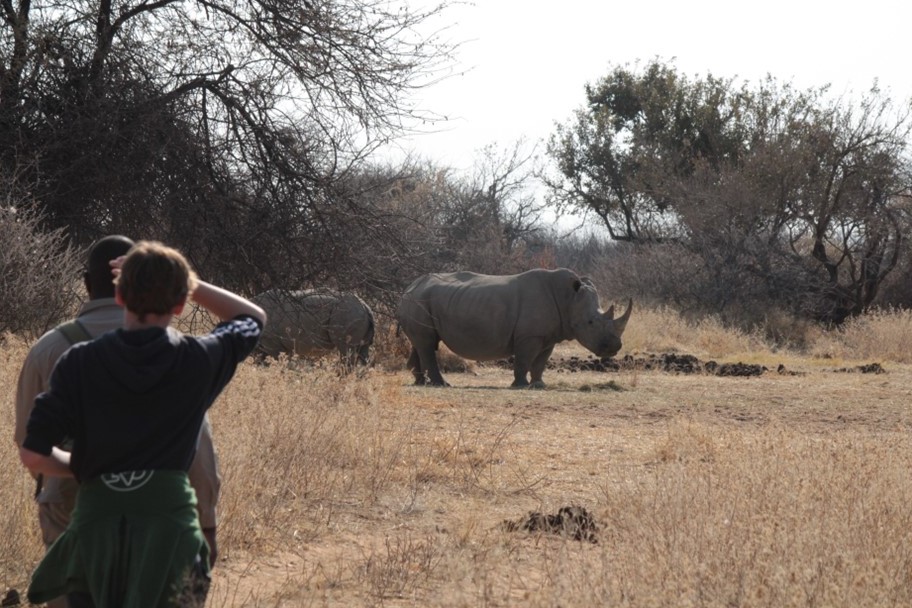The Waterberg plateau was our second stop and is one of Namibia’s more famous geographical formations. Best seen from the camp, it makes you feel small as you look out into its never-ending canyon and is a great place to play Africa by TOTO.
It does have to be said that you will se a lot less wildlife in Waterberg than most places you’d likely visit which does give it a more pristine and untouched feel which I prefer because finding animals by yourself in places they aren’t that common is more satisfying then being driven up to a water hole. Rhinos unfortunately, due to their systematic poaching to give China magical cancer-curing rhino dust, cannot be left alone because they haven’t exactly won the genetic lottery by being slow, big, unable to hide and having poor eyesight all accompanying a horn worth more in weight then gold and cocaine. This does though, provide a great opportunity to be walked right up to them since they’re used to human contact because they must be protected by armed guards 24/7 and require daily tours to pay for the huge costs of protecting them. If you book 3 or more nights at Waterberg, you get the rhino walk for free which is what we were pleasantly surprised by so on the morning of the second day we set off with a guide.
He would radio the guards who would tell him approximately where the rhinos were, and he would lead us down the trails to take us there. The guide said there was a 100% success rate and I guess I can confirm that on the one trip we went on we did see them. There are 6 white rhinos below the plateau which is the group you go to see on the rhino walk but on the top of the plateau, which you can only visit by booking the safari jeep at the national park office, (more about that later) the animals are actually trapped up there with the exception of monkeys and leopards (we saw leopard tracks but they were too sneaky) who are nimble enough to climb the rocky cliffs. This makes the anti-poaching teams job a little easier on the top of plateau as it offers a natural barrier and provides great habitat for the black rhino, which is rarer, more aggressive, and elusive; not allowing themselves to grow accustomed to humans. There are also white rhinos on top of the plateau too.
We walked for about an hour and a half only seeing an ostrich but then we walked into a fire escape which provided a long straight to look up. I assume the guide knew they were in the area, but I didn’t so I looked down the opening and saw a weird brown pile on the floor which turned out to be rhino crap. It was too far away so I handed the guide the binoculars se he could tell me, but he pointed them a bit higher then where I was looking and calmly said that there was a rhino. Somehow, I had missed the grey slab so unfortunately, I don’t think I’ll be pursuing an illustrious career in poaching. It ran off and I thought that that would be it but we walked up nonetheless to try and catch another glimpse. They soon came back into view and I thought we should stop and take some pictures before they ran off again but the guide pressed on. We were getting closer and closer, and I thought they were going to run off at any moment, but we just carried on walking until we were probably about five metres away from a mother and her calf. They were eating hay that had been laid out for them alongside a water trough, so they didn’t feel very wild, but it was amazing to be so close and have nothing between you and them. Of the population below the plateau, two had been born in the 16 years they’d had them but one of them had been killed by a poachers bullet a week after being shot so a complete waste and another had been killed in a fight with another rhino, so the rhinos of Waterberg have achieved net zero in only 16 years. This was an incredible experience and in the evening, we went on the tour of the top of the plateau.
We didn’t see any rhinos on the top of the plateau which is accessed by a steep hill that is fenced off, so that the animals can’t get down the road, which might seem unfair but it provides a layer of ant-poaching as well as allowing buffalo to live there which are banned in the rest of Namibia due to diseases but since they can’t come down, they are allowed in Waterberg and we did see them. The format of the safari was that we drove up into the plateau and stopped at two hides. The bushes were much thicker and closer to the road than other places, so we really didn’t see anything by car bar a few kudus. The two hides gave us a chance to see two different groups of giraffes which, I feel bad for saying, are the most boring and dullest animal I could possibly think of being. They look magnificent and surreal when you first see them but once you’ve seen one, you’ve seen them all. Their personalities are all the same and every step they take requires a minute of overthinking. They seem to live in complete silence which made the hide feet like a sensory deprivation room where every crack and creep was amplified by 10. We saw the buffalos leaving just as we entered the which were cool but the guide said that in the second hide, he could see a cloud of dust as he drove up and we walked through the tunnel entrance to get to the water hole and salt lick which he said was a black rhino which was running away as we arrived because it must’ve heard someone speaking or something but hey, gotta save something for next time.

